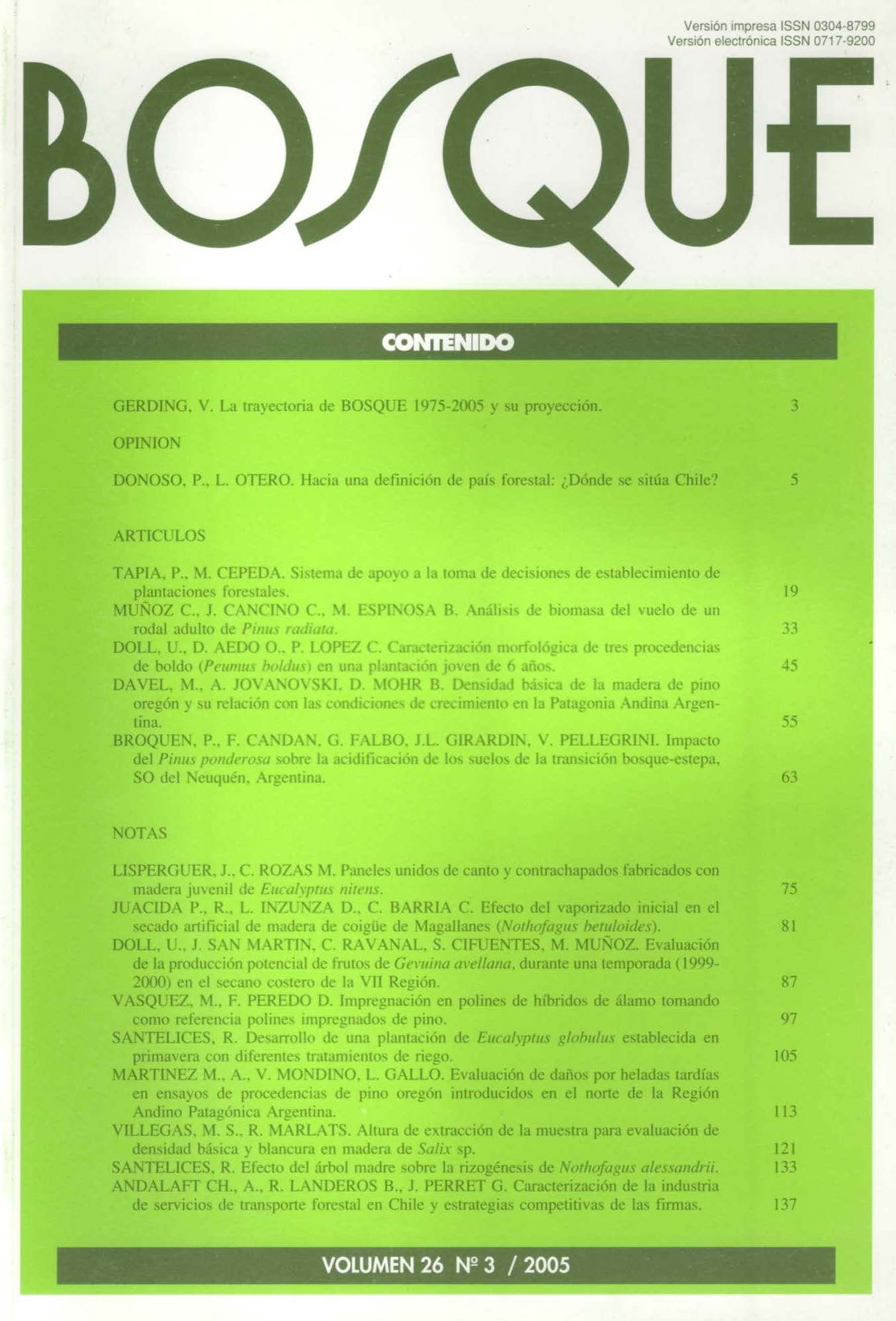Evaluation of damage by late frosts in provenances trials of Douglas-fir introduced in Argentinian North Patagonia
Main Article Content
Abstract
The susceptibility to late frost of the seed source used for afforestations at the moment it is one of the main adaptatives characteristic limiting the increase of the planted area of Douglas-fir (Pseudotsuga menziesii (Mirb.) Franco) in Argentinien North Patagonia Region. In two provenances trials of this species we registered frost injury caused by absolute minimum temperature of -7º C during spring. In both sites we found significant differences among treatments. We found a strong correlation between the percentage of frost injury and seed source longitude (r = 0.86) and with seed source altitude (r = 0.75) in the trail that registered the most rigorous minimum. In this trial we found also a weaker association with nursery mean heights (r = 0.55) and the origin latitude (r = 0.44). Considering that coastal origins are those of better potential growth, selection based only growth criteria could produce an indirect selection of susceptible genotypes. Finally we recommend the simultaneous evaluation of yield and susceptibility to be able to extend the specie cultivation towards other areas with increased frost risks.

